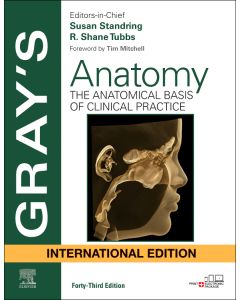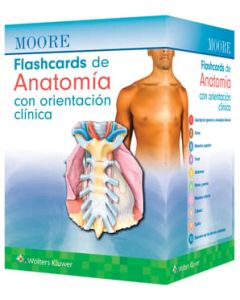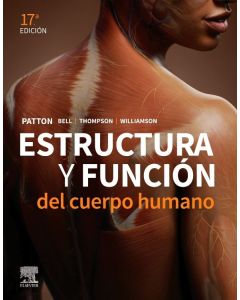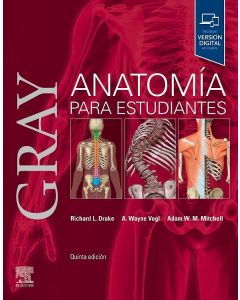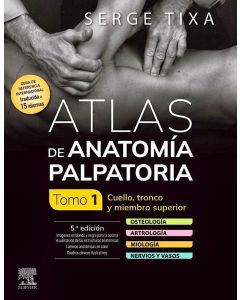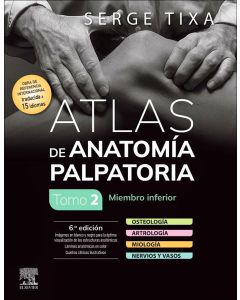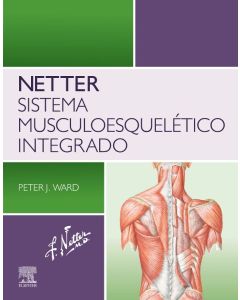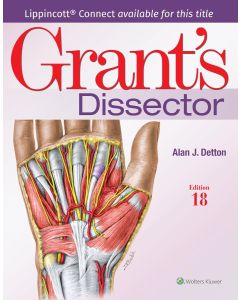Medicina
Ross & Wilson Anatomy and Physiology
Incluye Gastos de Importación
Now in its fourteenth edition, this best-selling textbook has been honed over many years to provide a clear, straightforward introduction to the human body for students of nursing, allied health or biomedical and paramedical science.
The book covers the core essentials of anatomy and physiology, including basic pathology and pathophysiology of important diseases and disorders. This new edition presents additional illustrations to enhance understanding of key concepts, including pathophysiology and diagnostics. Included for the first time is an introduction to surface anatomy, while other updating reflects current scientific knowledge and developments, including coronavirus. Enhanced learning features and an extensive online resource help you grasp all the important areas.
Like millions of readers before you, you will treasure Ross & Wilson as a go-to resource that you will refer to time and again to support this critical aspect of your healthcare education.
Key Features
Clear and easy to read – suitable for students new to the area and anyone whose first language is not English
Hundreds of stunning illustrations and images to make learning easy
Helpful learning features such as Learning Outcomes boxes, colour coding and orientation icons to facilitate navigation
Definitions of common prefixes, suffixes and roots, examples, glossary and an appendix of normal biological values
Self-assessment activities in each chapter, including ‘spot check’ questions for each section and case studies with answers to develop understanding of key principles
Accompanying website with animations, videos, audio-glossary and other self-assessment material
Evolve Study Resources
Online content offered with Ross & Wilson Anatomy and Physiology in Health and Illness 14th edition includes:
New for this edition – a set of expert-narrated 3D videos summarizing key topics in the book, powered by Complete Anatomy: the world’s most advanced 3D anatomy platform
Over 120 animations clarifying underlying principles and make learning fun
More than 1700 audio glossary entries
Body Spectrum © online colouring and self-test software
Self-assessment questions to help students test their knowledge
-
Especialidad
- Anatomía

Now in its fourteenth edition, this best-selling textbook has been honed over many years to provide a clear, straightforward introduction to the human body for students of nursing, allied health or biomedical and paramedical science.
The book covers the core essentials of anatomy and physiology, including basic pathology and pathophysiology of important diseases and disorders. This new edition presents additional illustrations to enhance understanding of key concepts, including pathophysiology and diagnostics. Included for the first time is an introduction to surface anatomy, while other updating reflects current scientific knowledge and developments, including coronavirus. Enhanced learning features and an extensive online resource help you grasp all the important areas.
Like millions of readers before you, you will treasure Ross & Wilson as a go-to resource that you will refer to time and again to support this critical aspect of your healthcare education.
Key Features
Clear and easy to read – suitable for students new to the area and anyone whose first language is not English
Hundreds of stunning illustrations and images to make learning easy
Helpful learning features such as Learning Outcomes boxes, colour coding and orientation icons to facilitate navigation
Definitions of common prefixes, suffixes and roots, examples, glossary and an appendix of normal biological values
Self-assessment activities in each chapter, including ‘spot check’ questions for each section and case studies with answers to develop understanding of key principles
Accompanying website with animations, videos, audio-glossary and other self-assessment material
Evolve Study Resources
Online content offered with Ross & Wilson Anatomy and Physiology in Health and Illness 14th edition includes:
New for this edition – a set of expert-narrated 3D videos summarizing key topics in the book, powered by Complete Anatomy: the world’s most advanced 3D anatomy platform
Over 120 animations clarifying underlying principles and make learning fun
More than 1700 audio glossary entries
Body Spectrum © online colouring and self-test software
Self-assessment questions to help students test their knowledge
- Instructions for online access
- Cover image
- Title page
- Table of Contents
- Copyright
- Preface
- Acknowledgements
- Anatomical directions and orientation
- Section One. The body and its constituents
- CHAPTER 1. Anatomy and organisation of the body
- Levels of structural complexity
- Survival needs of the body
- Introduction to anatomy and organisation of the body
- Organisation of the body
- Introduction to ageing
- Introduction to the study of illness
- Chapter 2. Physiological chemistry and processes
- Atoms, molecules and compounds
- Important biological molecules
- The internal environment and homeostasis
- Body fluids
- Case study
- Chapter 3. Cells and tissues
- The cell: structure and functions
- Tissues
- Changes in cell size and number
- Neoplasms or tumours
- Case study
- Section Two. Communication
- Chapter 4. The blood
- Plasma
- Cellular content of blood
- Erythrocyte disorders
- Leukocyte disorders
- Haemorrhagic diseases
- Case study
- Chapter 5. The cardiovascular system
- Blood vessels
- Heart
- Blood pressure
- Pulse
- Circulation of the blood
- Fetal circulation
- Effects of ageing on the cardiovascular system
- Shock
- Thrombosis and embolism
- Blood vessel pathology
- Oedema
- Diseases of the heart
- Disorders of blood pressure
- Case study 1
- Case study 2
- CHAPTER 6. The lymphatic system
- Lymph vessels and lymph
- Lymphatic organs and tissues
- Lymph vessel pathology
- Diseases of lymph nodes
- Disorders of the spleen
- Diseases of the thymus gland
- Case study
- Chapter 7. The nervous system
- Cells and tissues of the nervous system
- Central nervous system
- Peripheral nervous system
- Effects of ageing on the nervous system
- Disorders of the brain
- Infections of the central nervous system
- Demyelinating diseases
- Motor neurone disease
- Disorders of the spinal cord
- Disorders of peripheral nerves
- Developmental abnormalities of the nervous system
- Case study 1
- Case study 2
- CHAPTER 8. The special senses
- Hearing and the ear
- Balance and the ear
- Sight and the eye
- Sense of smell
- Sense of taste
- Effects of ageing on the special senses
- Disorders of the ear
- Disorders of the eye
- Refractive errors of the eye
- Case study
- CHAPTER 9. The endocrine system
- Pituitary gland and hypothalamus
- Thyroid gland
- Parathyroid glands
- Adrenal glands
- Pancreatic islets
- Pineal gland
- Organs with secondary endocrine functions
- Local hormones
- Effects of ageing on the endocrine system
- Disorders of the pituitary gland
- Disorders of the thyroid gland
- Disorders of the parathyroid glands
- Disorders of the adrenal cortex
- Disorders of the adrenal medulla
- Disorders of the pancreatic islets
- Section Three. Intake of raw materials and elimination of waste
- Chapter 10. The respiratory system
- Nose and nasal cavity
- Pharynx
- Larynx
- Trachea
- Lungs
- Respiration
- Effects of ageing on the respiratory system
- Disorders of the upper respiratory tract
- Obstructive lung disorders
- Restrictive lung disorders
- Lung infections
- Lung tumours
- Lung collapse
- Case study
- Chapter 11. Introduction to nutrition
- The balanced diet
- Nutrients
- Non-starch polysaccharide
- Ageing and nutrition
- Disorders of nutrition
- Chapter 12. The digestive system
- Organs of the digestive system
- Basic structure of the alimentary canal
- Mouth
- Salivary glands
- Pharynx
- Oesophagus
- Stomach
- Small intestine
- Large intestine, rectum and anal canal
- Pancreas
- Liver
- Biliary tract
- Summary of digestion and absorption of nutrients
- Metabolism
- Effects of ageing on the digestive system
- Diseases of the mouth
- Diseases of the pharynx
- Diseases of the salivary glands
- Diseases of the oesophagus
- Diseases of the stomach
- Diseases of the intestines
- Diseases of the pancreas
- Diseases of the liver
- Diseases of the gall bladder and bile ducts
- Case study 1
- Case study 2
- Chapter 13. The urinary system
- Kidneys
- Ureters
- Urinary bladder
- Urethra
- Micturition
- Effects of ageing on the urinary system
- Kidney disorders
- Disorders of the renal pelvis, ureter, bladder and urethra
- Case study
- Section Four. Protection of the body and continuation of the species
- Chapter 14. The skin
- Structure of the skin
- Functions of the skin
- Wound healing
- Effects of ageing on the skin
- Disorders of the skin
- Case study
- Chapter 15. Defence and immunity
- Non-specific (innate) defence mechanisms
- Immunity
- Ageing and immunity
- Abnormal immune function
- Case study
- Chapter 16. The musculoskeletal system
- Bone
- Axial skeleton
- Appendicular skeleton
- Joints
- Skeletal muscle
- Effects of ageing on the musculoskeletal system
- Diseases of bone
- Disorders of joints
- Diseases of muscle
- Case study 1
- Case study 2
- Chapter 17. Genetics and inheritance
- DNA, chromosomes and genes
- Protein synthesis
- Cell division
- The genetic basis of inheritance
- Ageing and genetics
- Genetic basis of disease
- Chapter 18. The reproductive systems
- Female reproductive system
- Male reproductive system
- Fetal development and pregnancy
- Effects of ageing on the reproductive systems
- Infections of the reproductive tract
- Diseases of the female reproductive system
- Diseases of the male reproductive system
- Case study
- Answers to self-assessment and case study questions
- Glossary
- Normal values
- Common prefixes, suffixes and roots
- Bibliography
- Index
Escribir Su propia reseña

